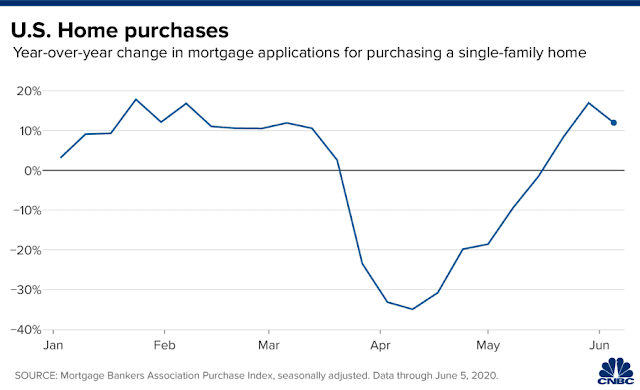Manufacturing Sours, Construction Spending Stable
Economic Report Monitor #26
May 1st, 2020
On the last day of the week, two PMIs from IHS Market and the Institute of Supply Management make their appearances. IHS's report on the manufacturing sector saw a drop from 48.5 to 36.1 in April, just above 2008-2009 levels. The figure was also slightly lower than the "flash" figure reported earlier this month. Output saw the steepest decline in the series history as domestic and foreign new orders plummeted. The excess capacity lead to employment falling to March 2009 levels. In another first, firms were pessimistic on outlook for the first time in the series history (since July 2012). The decline in employment also came with a decrease in firm buying activity resulting in input costs falling as well (this was also exacerbated by low commodity costs).
The ISM Manufacturing Report on Business reported a 41.5 reading for April just 15 minutes after the IHS report. New orders, production, and employment all plummeted to just over 27 pts, the categories with the steepest declines. Inventories of suppliers and customers started to build as the indicators grew 2.8 pts and 5.4 pts respectively. Foreign demand was also weak falling -11.3 pts to 35.3. Imports were relatively flat, up just 0.6 pts to 42.7.
In the ISM report, some firms' comments suggest that businesses are doing their best to chase demand in industries considered essential. A Transportation Equipment executive said that some vendors are "focusing only on the medical industry." Another executive, from a Chemical Products firm, reported that production has completely stopped with the exception of making hand sanitizer. Since the crisis is not rooted in economic problems, the slowdown in demand seems to be only impacting certain industries while others thrive. This seems to be a characteristic of this downturn that does not compare to the global financial crisis and the Great Recession that followed.
One of the industries that has weathered the storm is the construction industry. The Census Bureau reported a 0.9% increase in construction spending in March. The growth was mostly carried by a 2.3% increase in residential construction. Office construction fell -0.4% and is only up 0.4% for the year. Interestingly, this may be a trend that is accelerated by the COVID-19 crisis as employers might start to look at teleworking as a cheaper alternative after the forced transition caused by the virus. Moody's Analytics sees office vacancy rates higher as a result of the coronavirus crisis raising their initial vacancy rate forecast for 2020 from 19.4% to 20.5%. Office construction data might give the first hints at a downturn in office real estate as its especially sensitive to demand.
May 1st, 2020
On the last day of the week, two PMIs from IHS Market and the Institute of Supply Management make their appearances. IHS's report on the manufacturing sector saw a drop from 48.5 to 36.1 in April, just above 2008-2009 levels. The figure was also slightly lower than the "flash" figure reported earlier this month. Output saw the steepest decline in the series history as domestic and foreign new orders plummeted. The excess capacity lead to employment falling to March 2009 levels. In another first, firms were pessimistic on outlook for the first time in the series history (since July 2012). The decline in employment also came with a decrease in firm buying activity resulting in input costs falling as well (this was also exacerbated by low commodity costs).
The ISM Manufacturing Report on Business reported a 41.5 reading for April just 15 minutes after the IHS report. New orders, production, and employment all plummeted to just over 27 pts, the categories with the steepest declines. Inventories of suppliers and customers started to build as the indicators grew 2.8 pts and 5.4 pts respectively. Foreign demand was also weak falling -11.3 pts to 35.3. Imports were relatively flat, up just 0.6 pts to 42.7.
In the ISM report, some firms' comments suggest that businesses are doing their best to chase demand in industries considered essential. A Transportation Equipment executive said that some vendors are "focusing only on the medical industry." Another executive, from a Chemical Products firm, reported that production has completely stopped with the exception of making hand sanitizer. Since the crisis is not rooted in economic problems, the slowdown in demand seems to be only impacting certain industries while others thrive. This seems to be a characteristic of this downturn that does not compare to the global financial crisis and the Great Recession that followed.
One of the industries that has weathered the storm is the construction industry. The Census Bureau reported a 0.9% increase in construction spending in March. The growth was mostly carried by a 2.3% increase in residential construction. Office construction fell -0.4% and is only up 0.4% for the year. Interestingly, this may be a trend that is accelerated by the COVID-19 crisis as employers might start to look at teleworking as a cheaper alternative after the forced transition caused by the virus. Moody's Analytics sees office vacancy rates higher as a result of the coronavirus crisis raising their initial vacancy rate forecast for 2020 from 19.4% to 20.5%. Office construction data might give the first hints at a downturn in office real estate as its especially sensitive to demand.




Comments
Post a Comment